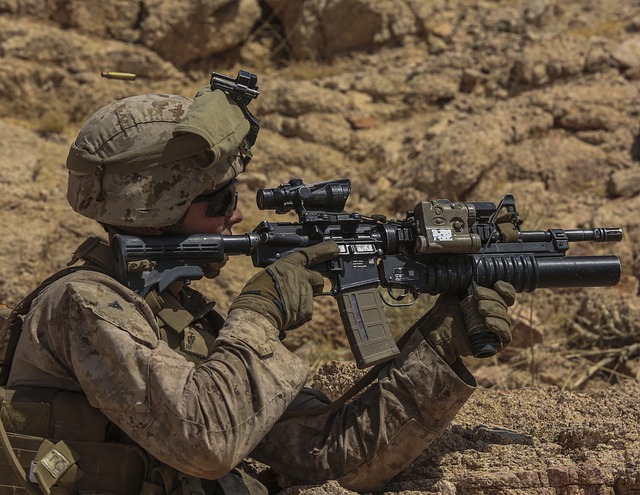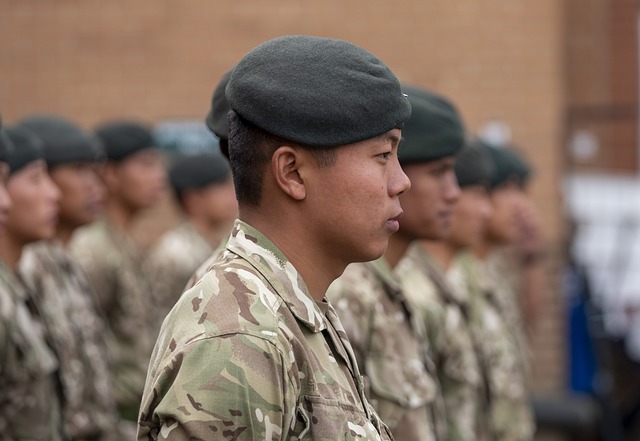The US Army Special Forces, or Green Berets, play a pivotal role in memorialization efforts across military memorials and monuments nationwide. Their specialized training in unconventional warfare adds depth and solemnity to ceremonies honoring the fallen. These events ensure the stories and sacrifices of their fellow servicemen and women are remembered appropriately, highlighting their enduring impact on both the battlefield and the communities they protect. The Green Beret symbol represents bravery and fosters camaraderie among veterans at these memorials, which also serve as educational tools for preserving the legacy of special operations units.
The US Army Special Forces, known for their covert operations and unique role in defense, are also integral to memorialization. Their presence at memorials and monuments holds profound significance, honoring their contributions and sacrifices. This article explores the symbolic display of Special Forces icons and emblems, the ritualistic ceremonies that surround them, and the critical role of monuments in preserving the history and legacy of these elite soldiers. Discover how these displays pay tribute to the US Army Special Forces’ invaluable service.
- The Significance of US Army Special Forces in Memorialization
- Iconic Symbols and Emblems: Honoring the Special Forces
- Rituals and Ceremonies: When Special Forces Are Displayed
- Preserving History: The Role of Monuments and Memorials
The Significance of US Army Special Forces in Memorialization

The US Army Special Forces, often referred to as the Green Berets, play a significant role in memorialization efforts across the nation’s military memorials and monuments. These highly trained soldiers embody the spirit of sacrifice and service, making them integral to honoring the fallen and preserving their legacy. Their presence at these sites not only adds a layer of solemnity but also serves as a powerful reminder of the diverse operations they undertake in defense of their country.
The memorialization process involves intricate ceremonies and rituals, where Special Forces members actively participate in paying tribute to their fellow servicemen and women. Their expertise in unconventional warfare tactics translates into unique contributions during these events, ensuring that the stories and sacrifices of the military are remembered and honored appropriately. This involvement is a testament to the enduring impact of the US Army Special Forces on both the battlefield and in the hearts and minds of those they protect.
Iconic Symbols and Emblems: Honoring the Special Forces

At many military memorials and monuments, iconic symbols and emblems play a vital role in honoring the service and sacrifices of special operations units, such as the US Army Special Forces. These unique markings serve as visual reminders of their distinct roles and contributions to national security. The Green Beret, for instance, is one of the most recognizable symbols associated with the US Army Special Forces, symbolizing their mission to conduct unconventional warfare and promote freedom around the globe.
The presence of these special forces emblems not only pays tribute to their bravery but also fosters a sense of camaraderie among veterans and serves as educational tools for the general public. By displaying these iconic symbols, memorials and monuments help preserve the legacy of special operations units, ensuring that their stories and achievements are remembered and respected for generations to come.
Rituals and Ceremonies: When Special Forces Are Displayed

At military memorials and monuments, the presence of US Army Special Forces units is often marked by elaborate rituals and ceremonies that pay tribute to their unique role in defense. These events serve as a powerful reminder of the sacrifices made by Special Forces operators, who are known for their exceptional training and ability to operate in the most challenging and dangerous environments. During these ceremonies, veterans and current members gather to honor their comrades, share stories, and pass down the legacy of courage and duty.
Special Forces units, such as the Green Berets, play a significant part in these rituals due to their historical involvement in covert operations and their reputation for mastering various skills like language proficiency, cultural understanding, and unconventional warfare tactics. The display of their flag or insignia at memorials is not merely decorative; it symbolizes the honor and respect owed to their specialized contributions, fostering a sense of camaraderie and pride among both veterans and those who serve or aspire to serve in these elite forces.
Preserving History: The Role of Monuments and Memorials

Monuments and memorials play a vital role in preserving history, especially those dedicated to military units such as the US Army Special Forces. These structures serve as permanent reminders of significant events, battles, and sacrifices made by service members. By honoring the past, they foster an understanding of history among future generations, ensuring that the stories and memories of fallen heroes are never forgotten.
In the case of the US Army Special Forces, memorials often depict intricate scenes reflecting their unique role in global operations. These artistic representations not only pay tribute to the bravery and skill of these soldiers but also educate visitors about the diverse missions they undertake. Preserving history through monuments creates a connection between the past and present, inspiring current and future members of the Special Forces and the public alike to uphold the values of courage, sacrifice, and service.
The US Army Special Forces play a unique and significant role in memorialization, as their contributions and bravery are honored through iconic symbols, rituals, and monuments. These displays serve as a lasting testament to their dedication, preserving history for future generations. By recognizing the Special Forces’ role in memorable ceremonies and erecting durable monuments, we pay tribute to their extraordinary service, fostering a deeper understanding of our nation’s past and the sacrifices made by these exceptional individuals.
